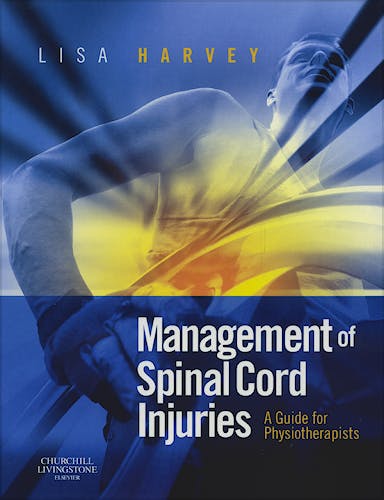

No hay productos en el carrito



Management of Spinal Cord Injuries
Harvey, L.
1ª Edición Enero 2008
Inglés
Tapa blanda
297 pags
1100 gr
19 x 25 x 2 cm
ISBN 9780443068584
Editorial CHURCHILL LIVINGSTONE
LIBRO ELECTRÓNICO
-5%
48,87 €46,43 €IVA incluido
46,99 €44,64 €IVA no incluido
Acceso On Line
Inmediato
Combining 25 years of clinical, research and teaching experience, Dr Lisa Harvey provides an innovative 5-step approach to the physiotherapy management of people with spinal cord injury. Based on the International Classification of Functioning, this approach emphasises the importance of setting goals which are purposeful and meaningful to the patient. These goals are related to performance of motor tasks analysed in terms of 6 key impairments. The assessment and treatment performance of each of these impairments for people with spinal cord injury is described in the following chapters:
- training motor tasks
- strength training
- contracture management
- pain management
- respiratory management
- cardiovascular fitness training
Dr Harvey develops readers' problem-solving skills equipping them to manage
all types of spinal cord injuries. Central to these skills is an understanding
of how people with different patterns of paralysis perform motor tasks and the
importance of differentmuscles for motor tasks such as:
*transfers and bed mobility of people
*wheelchair mobility
*hand function for people with tetraplegia
*standing and walking with lower limb paralysis
This book is for students and junior physiotherapists with little or no experience
in the area of spinal cord injury but with a general understanding of the principles
of physiotherapy. It is also a useful tool for experienced clinicians, including
those keen to explore the evidence base that supports different physiotherapy
interventions.
Contents
Section 1: The Bare Essentials
Chapter 1: Background information
Chapter 2: A framework for physiotherapy management
Section 2: Understanding how people with paralysis perform motor tasks
Chapter 3: Transfers and bed mobility for people with lower limb paralysis
Chapter 4: Wheelchair mobility
Chapter 5: Hand function of people with tetraplegia
Chapter 6: Standing and walking with lower limb paralysis
Chapter 7: Training Motor tasks
Chapter 8: Strength training
Chapter 9: Contracture management
Chapter 10: Pain management
Chapter 11: Respiratory management
Chapter 12: Cardiovascular fitness training
Section 3: Environmental factors
Chapter 13: Wheelchair seating
Section 4: The way forward
Chapter 14: Evidence-based physiotherapy
Appendix: Innervation of muscles
© 2025 Axón Librería S.L.
2.149.0